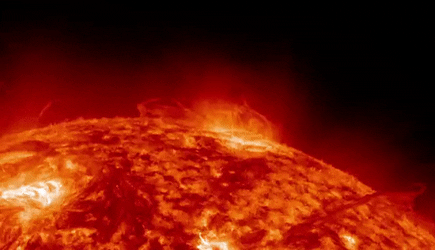The Sun emitted a significant solar flare peaking at 11:35 a.m. EDT on Oct. 28, 2021. NASA’s Solar Dynamics Observatory, which watches the Sun constantly, captured an image of the event.
Solar flares are powerful bursts of radiation. Harmful radiation from a flare cannot pass through Earth’s atmosphere to physically affect humans on the ground, however — when intense enough — they can disturb the atmosphere in the layer where GPS and communications signals travel.
Impacts to our technology from a G3 storm are generally nominal. However, a G3 storm has the potential to drive the aurora further away from its normal polar residence and if other factors come together, the aurora might be seen over the far Northeast, to the upper Midwest, and over the state of Washington.
This flare is classified as an X1-class flare.
X-class denotes the most intense flares, while the number provides more information about its strength. An X2 is twice as intense as an X1, an X3 is three times as intense, etc. Flares that are classified X10 or stronger are considered unusually intense.
To see how such space weather may affect Earth, please visit NOAA’s Space Weather Prediction Center https://spaceweather.gov/, the U.S. government’s official source for space weather forecasts, watches, warnings, and alerts.
A G3 (Strong) Geomagnetic Storm Watch is in effect for 30 – 31 October, 2021, following a significant solar flare and Coronal Mass Ejection (CME) from the sun that occurred around 11:35 a.m. EDT on Oct. 28. Analysis indicated the CME departed the Sun at a speed of 973 km/s and is forecast to arrive at Earth on 30 October, with effects likely continuing into 31 October.
When the CME approaches Earth, NOAA’s DSCOVR satellite will be among the first spacecraft to detect the real time solar wind changes and SWPC forecasters will issue any appropriate warnings.
.NASA works as the research arm of the nation’s space weather effort. NASA observes the Sun and our space environment constantly with a fleet of spacecraft that study everything from the Sun’s activity to the solar atmosphere, and to the particles and magnetic fields in the space surrounding Earth. Source NASA





